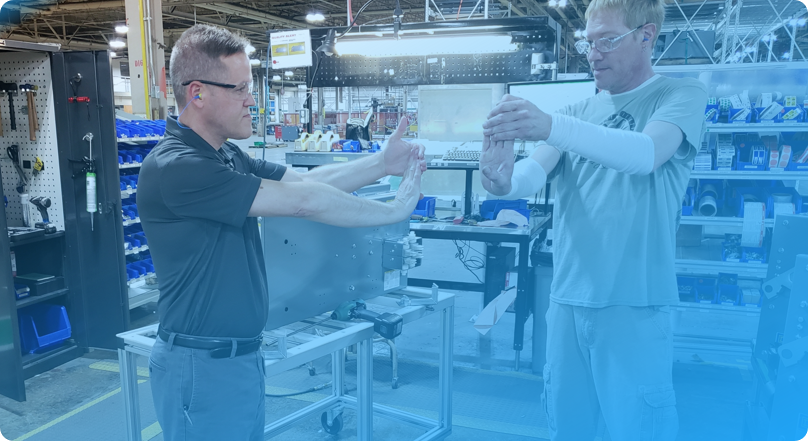Imagine for a second that you have a crystal ball in your office.
Through it, you can see the next three years of recordable injuries at your facility.
Sue, carpal tunnel.
Joe, back strain.
Tom, thoracic outlet compression.
And the list goes on and on.
Here’s the thing. You don’t need a crystal ball to uncover the next three years of MSDs at your facility. What you need is early intervention.
Discover Early Warning Signs, Prevent MSDs
We know that MSDs develop over the course of time as the result of exposure to risk factors. Carpal tunnel doesn’t happen overnight. Tendonitis doesn’t develop in a day. This means the early warning signs of these injuries are present long before an MSD develops to the point of lost function and pain requiring medical treatment.
Armed with this knowledge, we can implement a proactive strategy to discover the early warning signs of MSDs and fix the underlying causes. This is exactly what early intervention does.
Early intervention is a proactive strategy designed to discover early warning signs of MSDs and prevent the early warning signs from developing into an injury.
The early warning signs of the next 2-3 years’ worth of MSDs are present in your workforce today. The question is, what are you going to do about it?
Assuming you don’t have a crystal ball handy, getting started with early intervention should be on the top of your to-do list.
There are five steps to the early intervention process.
Step 1 – Awareness and Education
Workers need to understand the early warning signs of MSDs so they can recognize them when they appear. It’s important that they understand the fundamental principles of prevention as well as the self-care regimen that is recommended for all employees.
Step 2 – Encourage Early Reporting
Employees should be highly encouraged to report early warning signs of MSDs to supervisors, team leads or directly to the on-site injury prevention specialist. Creating a culture that encourages early reporting is critical to this process.
Step 3 – React Positively and Respond Quickly
Supervisors and team leads should be trained to react positively and respond quickly to early reports of fatigue and discomfort. We often mention being “over the top” positive to these early reports. The injury prevention specialist should be notified immediately and quickly respond to the report.
Over the top and on the hop! Sounds cheesy, but it’s extremely effective in practice.
Step 4 – Conduct the Early Intervention Consultation
When an early report is received, the injury prevention specialist conducts a one-on-one consultation with the employee.
This consultation has three parts:
- Listen to the employee and understand the problems they are having.
- Review the self-care program for the employee and make them aware of the prevention tools available to them.
- Evaluate the job and remove any causative risk factors present through the ergonomics improvement process and implementing the necessary ergonomic controls.
Step 5 – Follow up & Report
The injury prevention specialist should follow up with the employee on a weekly basis until the early signs are resolved and the employee is returned to peak health.
Each of these interactions should be recorded. Results of all early intervention consultations should be compiled and reported on a monthly basis. These reports should be used to identify overall trends and workplace improvement opportunities.
Bonus Tip
You might be thinking that an early intervention process sounds great, but wondering who is qualified to do the early intervention consultations and how you are going to find time for this.
We’ve written before about how a workplace Athletic Trainer deserves to be on your OHS team, and early intervention is where they really shine.
Athletic trainers are allied healthcare professionals specifically trained in injury prevention and human performance. We’re a little biased because we use the Workplace Athletic Trainer model of injury prevention for our clients, but you might consider adding an athletic trainer to your roster! You’ll be glad you did.
Conclusion
Musculoskeletal disorders develop over the course of time. The early warning signs of future injuries are present in your workforce today.
What are you going to do about it?
Early intervention will allow you to not only find the next three years of injuries, but help you take proactive steps to prevent them from happening.
Think prevention!
